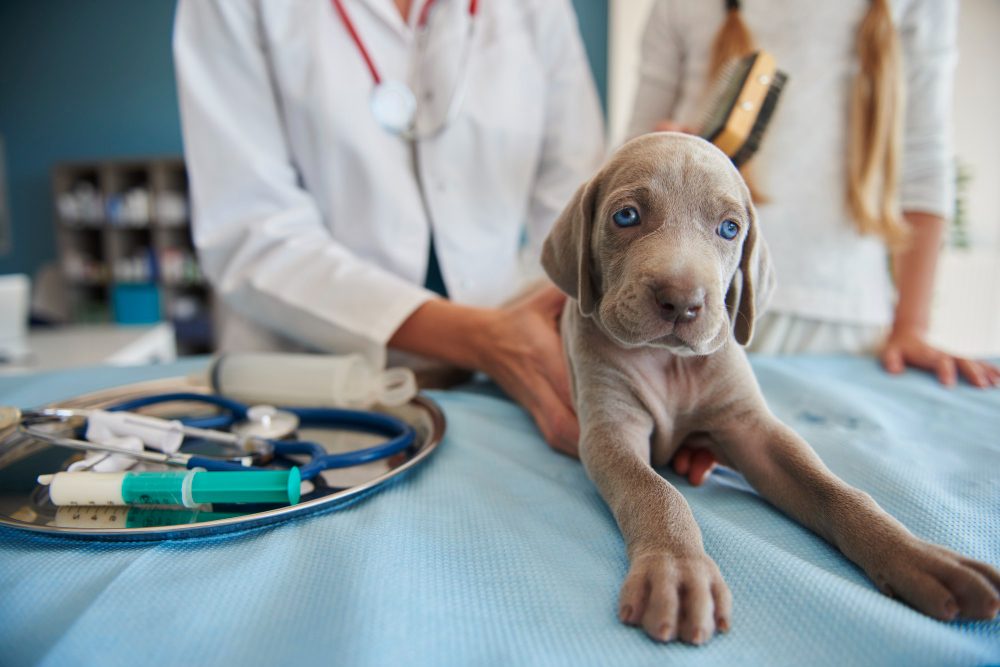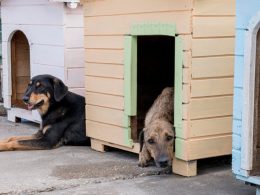To do so, tie up the dead dog and dispose of it after spraying it with a parvocide disinfectant. You can also get the phone number of a person who will pick up the dog’s body, such as a mobile vet service or a pet crematory, from the veterinarian.
Puppies and adult dogs can catch canine parvovirus, among the most dangerous and contagious infections a dog can contract. However, yearly vaccinations are easy to keep your favorite pet safe.
Keep pups at home until they have been vaccinated for parvo as an additional precaution. Dog parks, public parks, and lawns where dogs are routinely walked are all common areas where the parvo virus can be discovered, but they are especially vulnerable.
Dogs might become infected by meeting the virus left behind by an infected dog, or by touching anything an ill dog has used. To complicate things, most home sanitizers and antibacterial cleansers do not kill non-enveloped viruses.
After a dog has been exposed to canine parvovirus, it’s essential to know what you can and cannot do to prevent spreading the disease to other dogs in your house or yard. However, you should also know that no amount of precaution can guarantee that your home will be parvovirus-free.
How Long Does Parvo Stay Alive on the Ground?
The parvovirus is so robust that it can live up to nine years in the environment, including the earth and soil. As a result, the transmission of the virus is difficult to stop because it can tolerate most household cleaning solutions, temperatures, and humidity.
The parvovirus is so robust that it can live lasting up to nine years in the environment, including the earth and soil. As a result, the transmission of the virus is difficult to stop because it can tolerate most household cleaning solutions, temperatures, and humidity.
Your dog will show parvovirus infection between three to seven days of exposure. Two to three days following onset, symptoms become lethal if not treated.
Detecting parvovirus can be a concern because it can mimic other illnesses. While your veterinarian can run a simple test to see if your dog is infected with parvovirus, there is no treatment for the disease. To help the body fight off the sickness, rigorous treatment is needed.
Depending on the intensity of the symptoms, this treatment will be different. But in most cases, acute hospitalization for almost a week is required. In addition, blood tests are performed to determine the white blood cell and red blood cell counts, as well as the patient’s electrolyte balance, as part of this treatment.
Can You Disinfect Your Yard from Parvo?
Parvovirus is a deadly disease that is very contagious in puppies. Because parvo can survive outside for months on end on any surface, you will have to disinfect your yard for the disease.
Use diluted bleach on hard, non-organic surfaces to treat parvo in your yard. After your dog has survived parvo, you must sanitize your house and yard to prevent the spread of the disease.
The parvovirus is highly resistant to most standard disinfectants and cleansers, making it challenging to eradicate. Getting rid of it in the yard or garden can take months or years, especially if it’s shaded.
Proper cleansing is essential, particularly if you’ve had a canine pet infected with parvo. Parvovirus particles cannot be eliminated from your yard, but they can be reduced to a safe level for your pets with therapy.
If you split your house with a dog who has had parvo, you can bet your bottom dollar that’s also on your clothes and shoes. Long after the dog has recovered from parvo, you may be bringing it back into your house from your yard.
Even if your dog hasn’t encountered an infection, it could still develop parvo. To get infected, they need only to lick or sniff any surface that has been infected.
What Happens If I Touch a Dog with Parvo?
Human interaction with an afflicted dog can transmit the bacteria to pups and other dogs, even if the person is unaware of the dog’s illness. Consequently, a gentle pat on the shoulder can lead to a life-threatening illness.
Puppies and untreated dogs of all ages are susceptible to parvovirus, a highly contagious virus that causes severe gastrointestinal symptoms. Asymptomatic dogs can transfer the virus, and those exhibiting symptoms and barely recovering from the illness, feces, transmit the virus.
Your dog’s immunity is bolstered by lymphopoietic tissues, which parvo also affects pups. The virus can also affect your dog’s heart and lungs. A dog’s intestinal barrier is first damaged by the virus, which attacks healthy cells and prevents the absorption of essential nutrients.
At six, eight, and twelve weeks of age, your puppy should be vaccinated against parvovirus. One of the most excellent methods to preserve your puppy’s health and the health of other dogs in your home and community is to have your puppy parvovirus-vaccinated as soon as possible as a pet owner.
The antibodies from the mum dog are no longer available to protect the puppy around six weeks of age, which is when veterinarians recommend pet parents begin immunizing their puppies against parvo—so, if they have had all three parvo vaccines, a puppy isn’t protected from the disease.
Do Dogs with Parvo Have to be Put Down?
While some people may not make it through parvo, many do if they are adequately hydrated and cared for. However, correct water and electrolyte treatment are vital, regardless of whether they are given an immune serum.
Your veterinarian may also prescribe antibiotics to prevent infectious diseases from reaching your dog’s intestines through the damaged walls. The initial few days are always the most precarious. However, in most cases, puppies that survived the very first three days will make a full recovery within one week.
Veterinarians often request a parvovirus test when a puppy exhibits lethargy, vomiting, or diarrhea. Unfortunately, as a result of the body not having had an opportunity to produce these cells, false negatives can arise.
We may need to conduct blood tests if your dog’s positive results. An accurate picture of the patient’s overall health will be provided, including information on their WBC count, blood sugar level variations, and any electrolyte imbalances that need to be addressed. This data will help us determine what kind of treatment you’ll need.
Unvaccinated and partially vaccinated puppies should not be introduced to unvaccinated dogs because of this rigorous timetable and the high contagiousness of parvo. In addition, dog parks and daycares can be dangerous locations for pets, so avoid them if you can.














